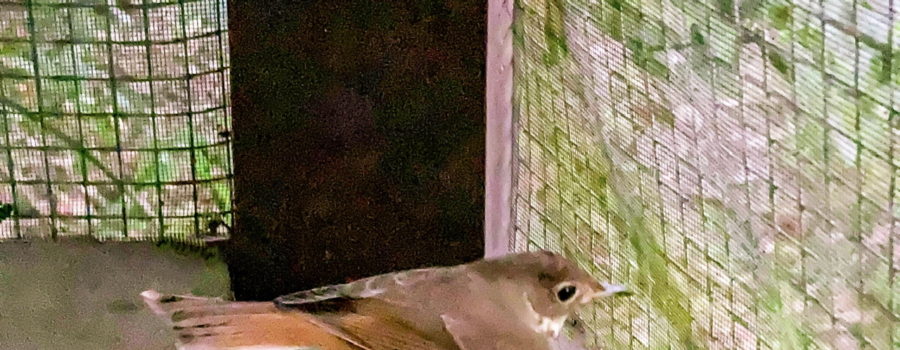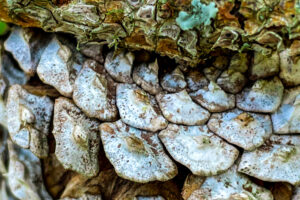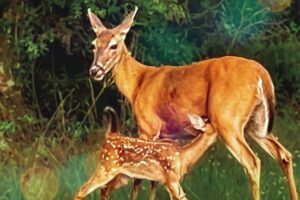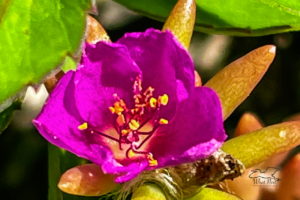Swainson’s Thrush is a Beautiful Migrant Through Central Florida

Not long ago, I got up one weekday morning and put the dogs outside for some morning exercise and potty time, just like I usually do. I have one chihuahua that goes outside on the enclosed area gazebo since he’s small enough that I don’t trust the larger dogs with him and I worry about large hawks or owls deciding to take him. He’s also small enough that there are some parts of the fence that I’m sure he could get through, too. When I put him out there it was dark, and I didn’t notice anything unusual. But about 45 minutes later, when I went to get him and it was getting light, I realized that there was a small bird trapped in the gazebo with him! Was it in there before? I don’t know. The dog didn’t really seem to care about his new companion, but the little bird was definitely somewhat distressed. The gazebo is screened in, but there is an opening at the top of the roof, and a small open gap between the top of the sides and the roof. I’m not sure how the little one had gotten in, but it definitely didn’t know how to get back out. It was a bird I really wasn’t familiar with, so I did take the opportunity to get a few photos before I opened the door and herded the little bird back out. It quickly flew off into the underbrush in the wild part of my yard, never to be seen again.

It took a bit of research to identify my little visitor, and although I’m pretty sure of my conclusions, please tell me if I’m wrong! I’m pretty sure this little bird was a Swainson’s thrush (Catharus ustulatus), also known as a mosquito thrush. At first I thought it was a hermit thrush, which is relatively common around here, but in none of my photos did it look like the tail was more reddish than the rest of the dorsal parts of the body, and every source I looked at said it should be. Then I concentrated my search on similar looking birds and found the Swainson’s thrush, but it’s not native to this area. Except during migration! And suddenly it all made sense! It’s late in the migration season, but we are most definitely still having migratory birds pass through this area, and this particular species likes to do it’s migratory flying at night.

Swainson’s thrush and the hermit thrush are members of the thrush family which includes American robins, Eastern bluebirds, and veerys. Swainson’s thrush breeds in the summer months in the boreal forests in the northern United States and Canada. During spring migration, males arrive first to the breeding areas and establish territories, mainly by singing. The females arrive a bit later and choose mates. Once she has chosen, the female builds a cup shaped nest up in a conifer tree where she lays her eggs. She incubates the eggs by herself while the male forages for food for the both of them. Once the eggs hatch, both parents feed the young. These birds are omnivorous and eat mainly insects and berries. When the breeding season has ended, both sexes head south for the winter. There are two subspecies of Swainson’s thrush, the “russet-backed” and the “olive-backed”. The russet-backed subspecies breeds in the western parts of North America (especially Alaska) and winters in Mexico and Central America. The olive-backed, on the other hand, breeds in the eastern part of North America and flies further south, into South America for the winter. Part of that migration takes some of the easternmost birds through the Central Florida area.

During their migration, these thrushes are highly dependent on insects for food since insects are higher in protein and therefore sustainable energy. Berries also are not as readily available this time of the year, even in Florida, although these guys are known for stopping, sometimes for days, in areas where fall and winter berries are plentiful. The reason that these birds are sometimes called mosquito thrushes is that when hunting flying insects, they will often hover over an area while stalking their prey. I’m not sure, but I suspect my little friend may have been doing just that, and followed a moth or some other nocturnal insect down through the top of my gazebo. I don’t know how long it had been trapped, but I’m hopeful that it hadn’t been long, so that the little bird was able to rejoin it’s flock. I’m sorry that the little one got stuck, but I was really glad to get the opportunity to see it, since they are only in Florida for a short time each spring and fall and they’re active at night. Between that, their small size, and their elusive behavior I may never get to see, let alone photograph another one again.
Do you like beautiful nature photography and artwork? Do you like learning new and interesting things about animals and nature? If you answered yes, then this blog is for you! Join us and get first access to all new content and images!





Recent Comments